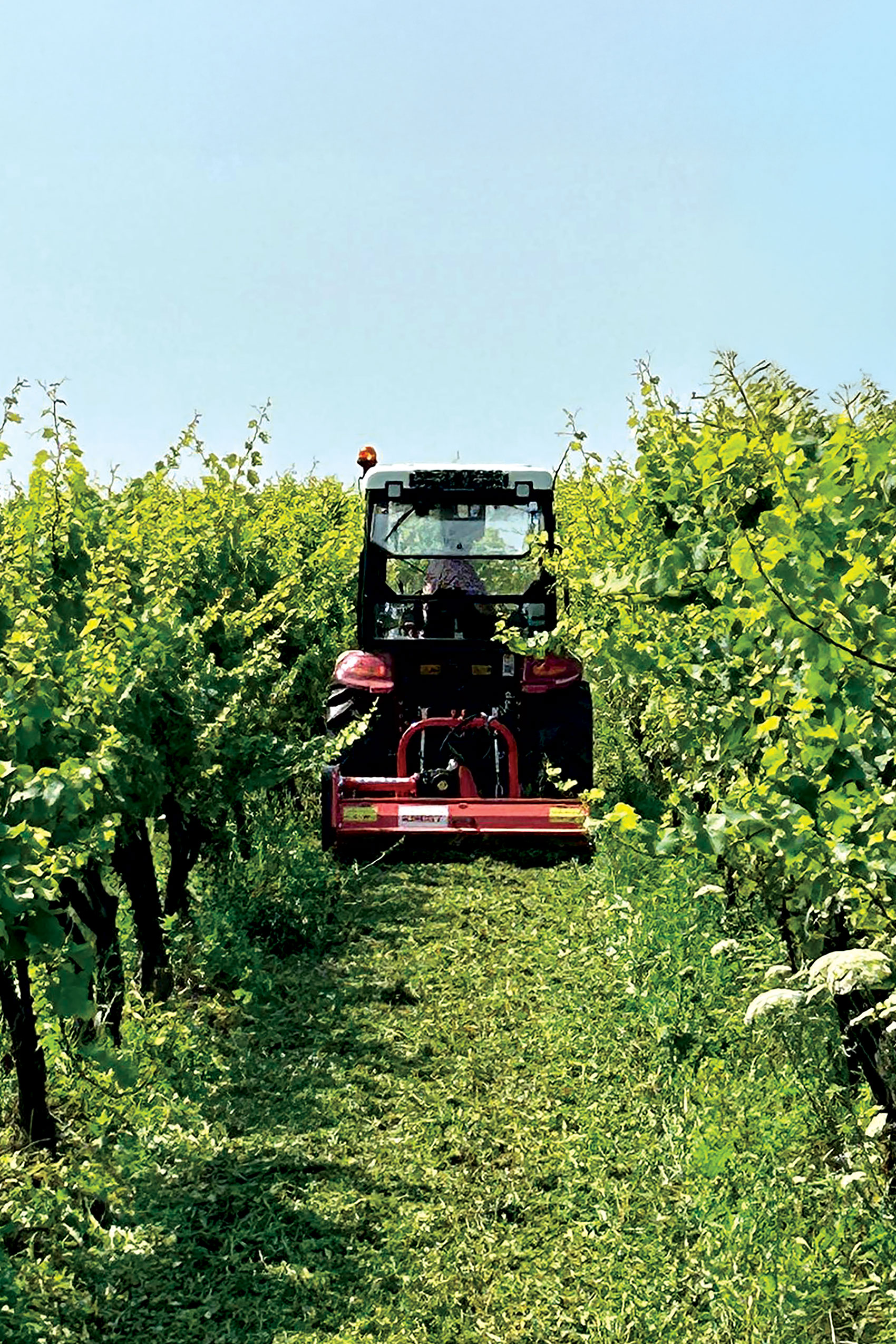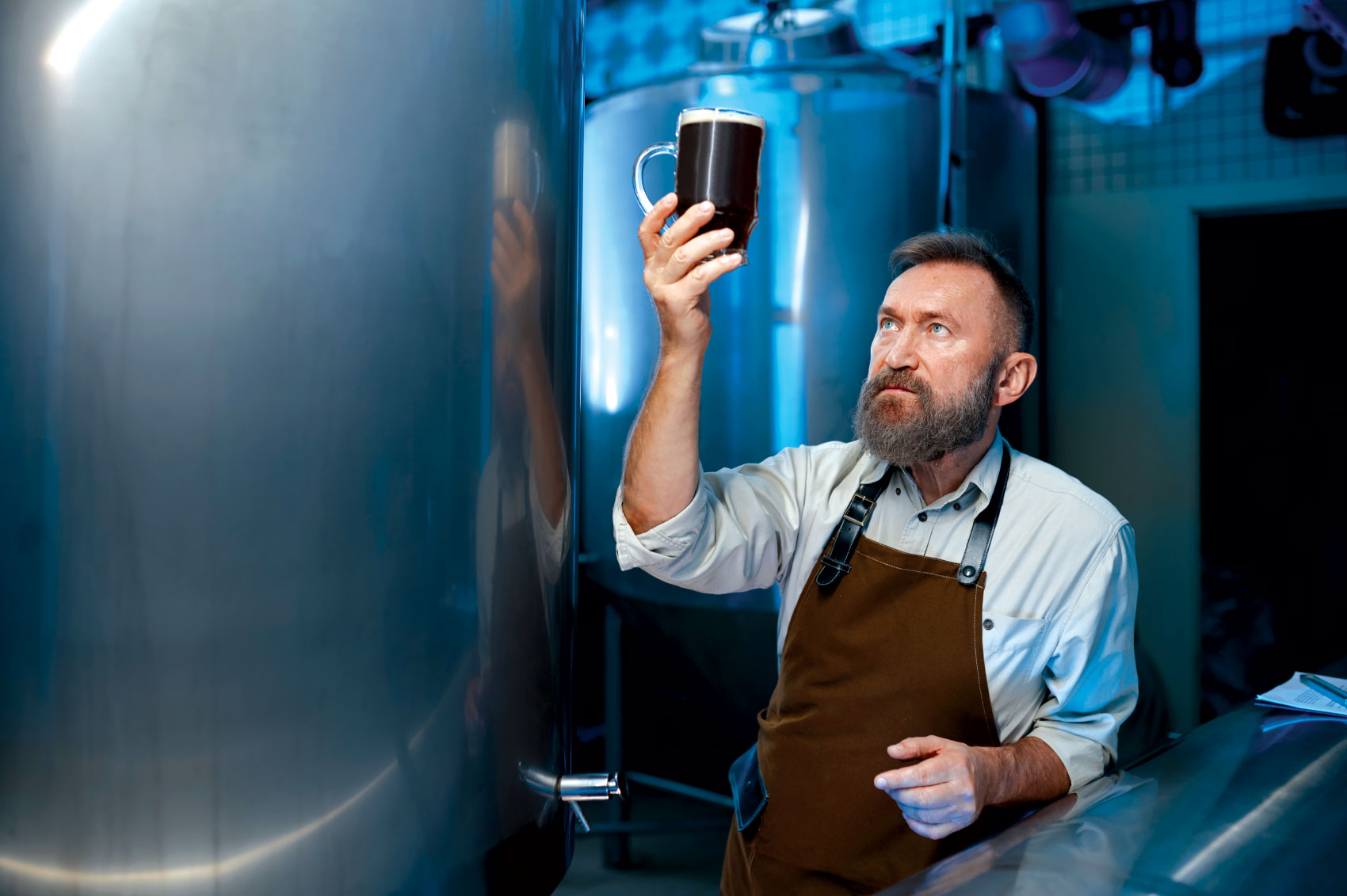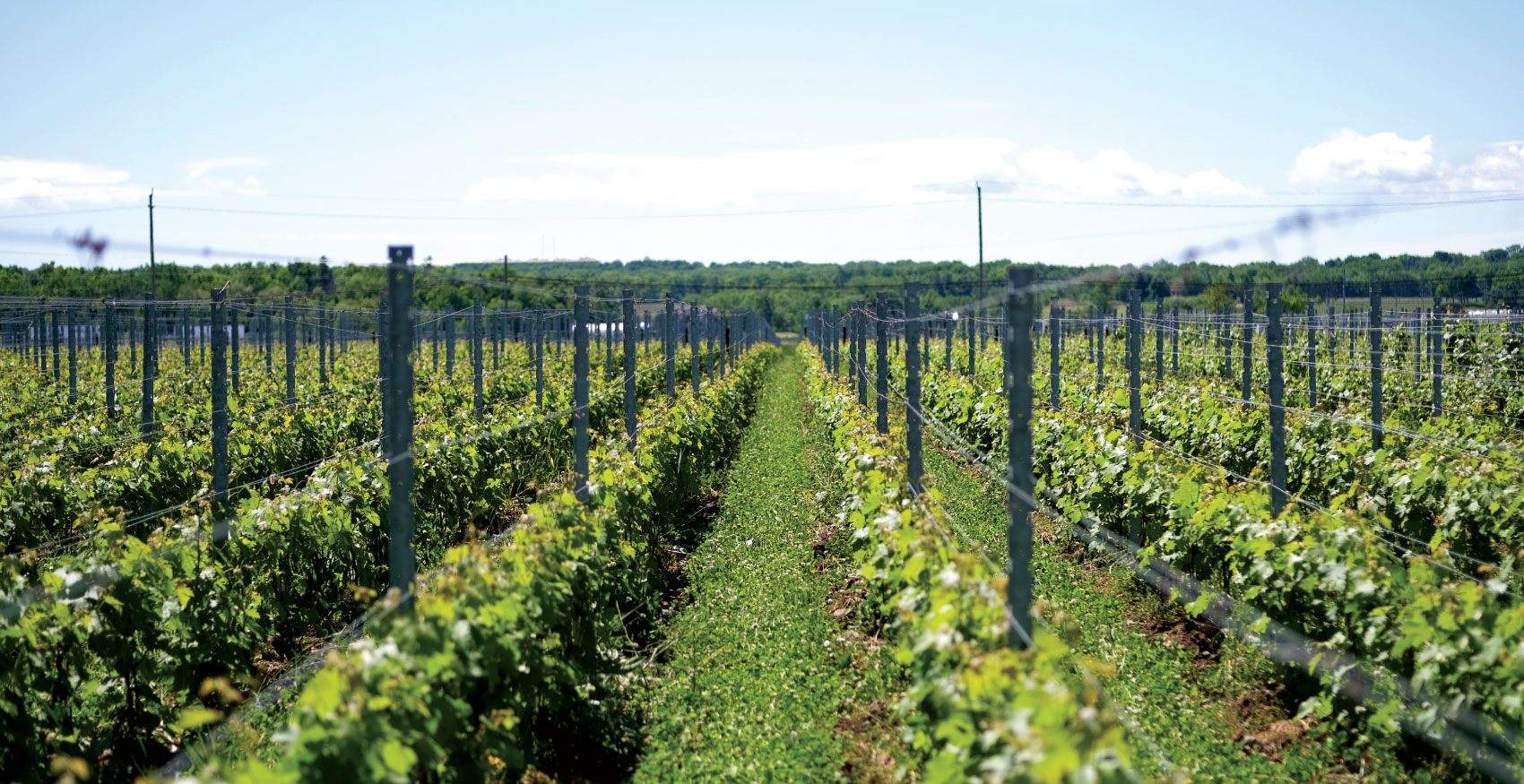If you’ve ever visited or worked at a winery, odds are you’ve heard or smelled evidence of a diesel tractor. That could soon be a thing of the past thanks to an Ontario agricultural equipment distributor. Cambridge, Ont.-based import and export company MAP Agri is the exclusive North American distributor for the Dutch-manufactured Knegt electric tractor.
Knegt’s electric tractor was designed with horticulture, green house and livestock operations in mind. It has been available in Europe for six years and was introduced in North America courtesy of MAP Agri in September 2023. MAP Agri president Marty Philippi says the Knegt electric tractor is ideal for vineyard operations. The primary advantage it offers vineyards over conventional diesel tractors is that it produces no exhaust fumes.
“The biggest benefit, particularly for vineyards, is your grape is really your product and if you’re running down the field and not discharging diesel fumes, you’re going to end up with a much better quality of grape,” Philippi said.

The green appeal of Knegt’s electric offering could also help vineyards connect with a customer base that has become increasingly interested in how the products they consume are crafted. “A big part of the whole vineyard industry is marketing your position in sustainability,” Philippi said.
He acknowledges that the cost of the Knegt electric tractor is higher than for a diesel model. Depending on the model and options chosen, it can be about 25 per cent more than its diesel counterpart. However, he says additional expenditure can be quickly recouped through reduced fuel and maintenance costs. A high-capacity lithium battery provides all the power the tractor and any attachments used might require. It also requires far less frequent servicing and maintenance than a diesel tractor.
“You’ve taken out 90 per cent of the maintenance,” Philippi said. “Apart from changing [the] hydraulic oil and filter once a year, and making sure you’ve greased and oiled your moving equipment, all diesel and related fuel maintenance is gone. You’ve taken all of that out of the equation. Electric engines will just run for years and years without much maintenance, without much grief.”
Knegt offers three versions of its compact electric tractor: 45HP, 55HP and 65HP. Each has an optional cab enclosure with well-appointed features. Other optional accessories include an external battery, front loader, towbar and front lift. The electric motor that powers the tractor is manufactured by the Benevelli Group of Italy, which is touted as one of the leading electric motor companies in the world.
Philippi says the tractor’s primary battery can last for between three and six hours depending on the kind of work its tasked to perform. The more arduous the task, the shorter the working time of the battery. An optional, externally-attached secondary battery can be used to extend the working time of the tractor. That means an operator can get up to 10 hours of work out of the tractor before having to park and recharge it.
Apart from changing [the] hydraulic oil and filter once a year, and making sure you’ve greased and oiled your moving equipment, all diesel and related fuel maintenance is gone. You’ve taken all of that out of the equation.
Marty Philippi, MAP Agri
Philippi says the electric tractor doesn’t require any specialized infrastructure to recharge its batteries. A dedicated plug and charger are included with each model. It can be fully charged overnight on 110V power and in about six hours on 220V. In addition, it can be charged to 80 per cent in about three hours if the operator has access to three-phase power.
MAP Agri’s president acknowledges the tractor’s battery-powered system can lose power more quickly during cooler, winter weather. That’s why his company asked Knegt to include a battery preconditioner in each model destined for North America. It kicks in when the temperature reaches two degrees Celsius or lower, and helps to regulate the temperature of the battery so it stays at an optimal warmth and doesn’t lose any power needlessly.
The tractor is suited to perform a number of different tasks on a winery, according to Philippi, including trimming, landscaping, and moving barrels and harvested grapes. His company is also in discussions with a technology company about adding features such as robotic spraying, data gathering and other precision farming tech.
On its surface, Knegt’s electric tractor looks no different than its diesel counterpart. The only real difference between the two is that the company has replaced its diesel engine “guts” with an exhaust-free battery system. The electric tractor drives and performs pretty much the same as any other tractor. The only difference an experienced operator will notice is the immediate torque its electric battery provides for both the drive train and any attachments. That means revving the engine at the start is not required and it’s “nearly impossible” to stall the machine, Philippi says. “The rest is just like driving a tractor. If you were ever a kid and rode on a tractor you’ll know right away how to drive it,” he said.
To date, MAP Agri has sold half a dozen of the electric tractors to customers in Canada and the U.S. Feedback has been largely positive so far. One of the most common comments Philippi has heard from customers, including a couple of vineyards, is how quiet the machines are.
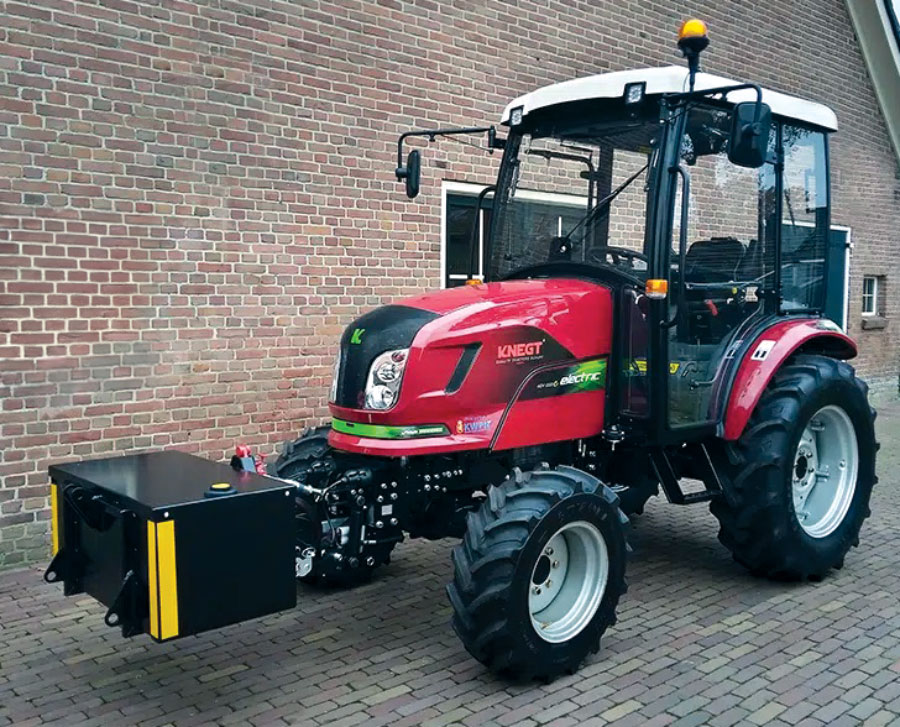
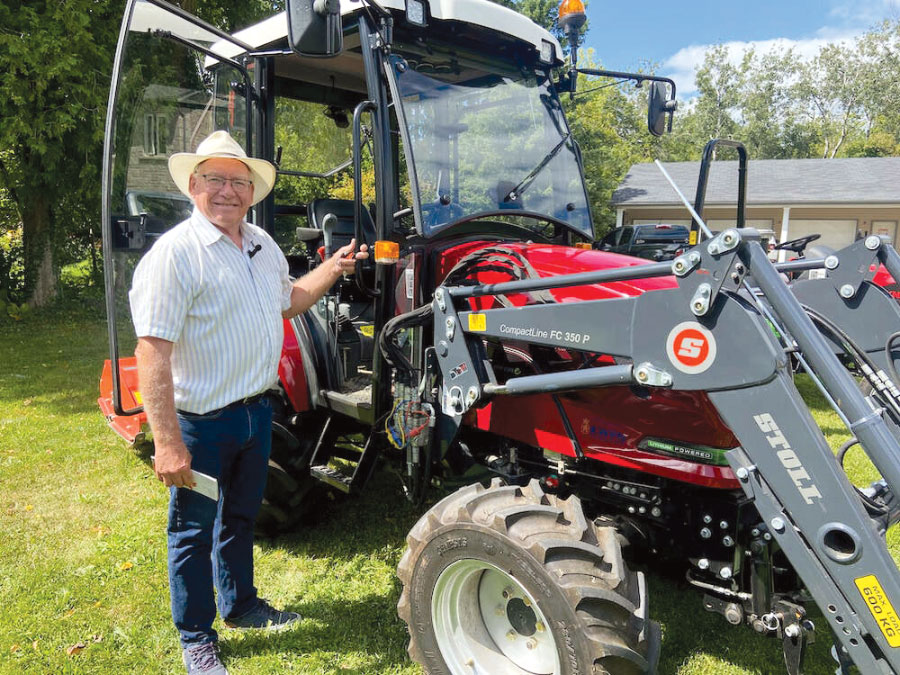
“The biggest thing is … these guys can actually hear their [other] equipment operating while they’re driving. If you’ve got a flail mower or some kind of sprayer going, with a diesel [motor], you probably won’t hear the sound of that equipment. With this, if something doesn’t sound right, you can stop and fix it right away. That actually happened on one of our demos. The farmer noticed the flail mower wasn’t working, stopped, fixed it and then kept on going. He was thrilled because it meant he could prevent a lot of errors.”
A number of people who have tried out the electric tractor have also commented on how they enjoy the fact they don’t have to lug around a can of diesel fuel with them when they are operating it. They’re also happy that they don’t have to inhale diesel fumes whenever they are working inside a barn or storage facility.
Philippi says Knegt has designed its electric tractor with simplicity in mind. That means that if a part has to be replaced, it can easily be swapped out with a North American-made replacement. Similarly, if there is an issue with its battery management system, it can be hooked directly to the factory through a dongle that attaches to a computer to diagnose the problem and fix it in a matter of minutes. It’s also compatible with most brands of attachments.
MAP Agri has signed distribution agreements with Canadian dealers in Ontario, B.C. and Alberta. It also expects to sign deals with U.S. dealers in New York and Montana, and is looking to extend its reach into California. While electric tractors are still a relatively new idea, Philippi is confident there is a market for them.
“I don’t see a wholesale transition, not yet. We’re still at the leading, bleeding edge as it were. It’s going to take demonstrations, trials and word of mouth,” he said. “I’m confident we’ll get a certain segment of the market. We won’t get it all because some people don’t want to go away from their trusted diesel engine, and that will still be an option for some operations and vineyards. The ones that are concerned about the environment, they’ll be the ones that will accept [it]. As that becomes increasingly important, that acceptance will grow.”

